Perons' Tree Frog at Careel Bay

Recent rains provided an opportunity to get a few photos of one of the frogs we hear singing in our Pittwater Online yard.
This is a Peron's tree frog (Litoria peronii).
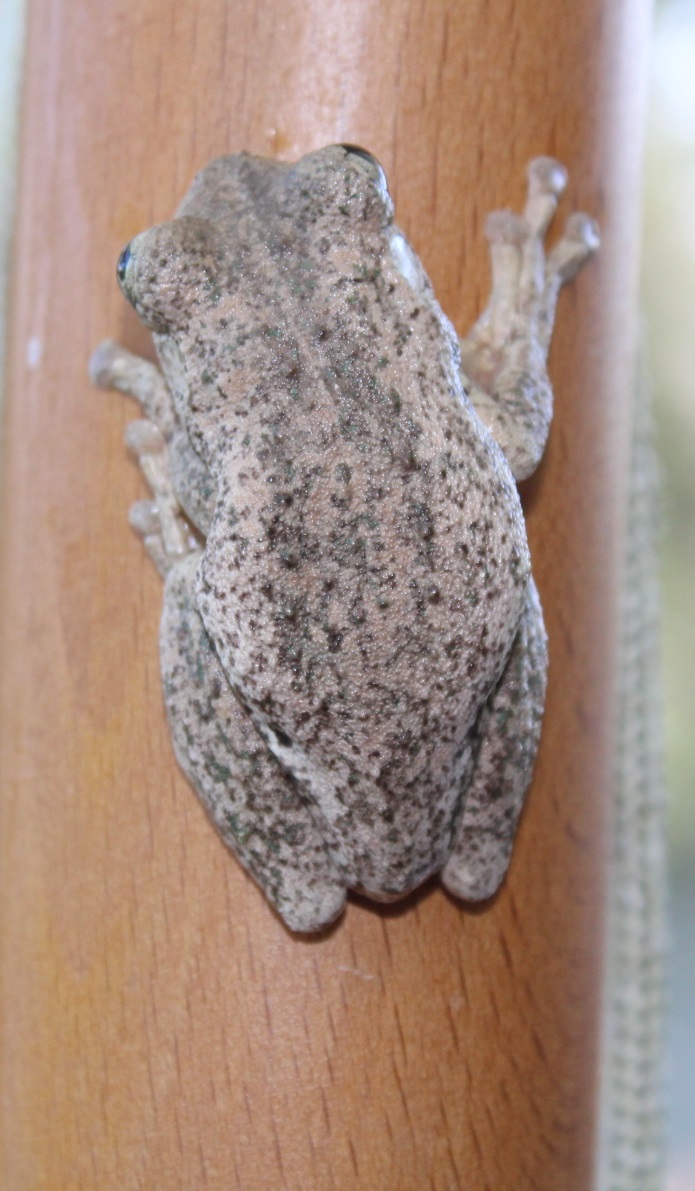
Peron's tree frog (Litoria peronii), also known as the emerald-spotted tree frog, emerald-speckled tree frog, laughing tree frog, and maniacal cackle frog, is a common Australian tree frog of the family Pelodryadidae.
Peron's tree frog is one of the most variably coloured frogs in Australia, with the ability to change colour in less than one hour.The frog has mottled yellow and black thighs, armpits, and groin and emerald spots are found on the back, which increase in number with age. A characteristic uncommon in the genus Litoria is pupils which appear cross-shaped. This characteristic is only shared with Tyler's tree frog within the genus Litoria. The male Peron's tree frog is about 44–53 mm, while females are 46–65 mm.

The call of Peron's tree frog is a high-pitched cackle, giving it the common names: the "laughing tree frog" and the "maniacal cackle frog". The frog is found in forests, woodlands, shrublands, and open areas, often far from a water source. They inhabit a variety of niches, predominantly arboreal, such as tree hollows, cracks, and beneath flaking bark. The frog is commonly found near civilisation (such as suburban Sydney), using ponds as their breeding-water source. They can often be seen on windows or near lights at night, hunting the insects attracted to these light sources. They can often be found at dusk on houseboat windows and beneath street lamps along the Murray River in South Australia.
On the coast, this frog is found in trees and streamside vegetation. Outside of the breeding season, it is usually found in tree canopies. It breeds in temporary pools, dams and ditches and sometimes tries to breed in suburban fish ponds. The male calls from the ground or in vegetation near water from Spring to Summer. The female lays its eggs in still water. It can be seen in urban areas and often calls during the day from cavities like drain pipes.
Peron’s Tree Frog is named after Francois Peron, one of the zoolologists on the Nicolas Baudin expedition (1801-1803) to Australian waters. Baudin referred to him as “Citizen Péron, the most thoughtless and most wanting in foresight of anyone on board”.
Death and desertion claimed the majority of the scientific personnel on this expedition; they left the ship at Mauritius. Of the 23 scientists who embarked, only three returned to France. Francois Peron was the only one of the original five zoologists to complete the trip. With the aid of the artist Charles Alexandre Lesueur, Péron was largely responsible for gathering some 100,000 zoological specimens—the most comprehensive Australian natural history collection to date. His work was illustrated by Charles Lesueur, who had joined the expedition originally as a gunner. Lesueur also lent his name to another local tree frog, Litoria lesueurii.
Baudin died before he could return to France, and it was Péron who began writing the official account of the expedition: Voyage de découvertes aux Terres Australes. In doing so, he committed a great injustice to his former commander's memory by magnifying his faults and frequently distorting the historical record. In the wake of the resumed fighting between France and Britain, Péron also drafted a secret Mémoire sur les établissements anglais à la Nouvelle Hollande, which advocated a French conquest of Port Jackson with the aid of rebellious Irish convicts.
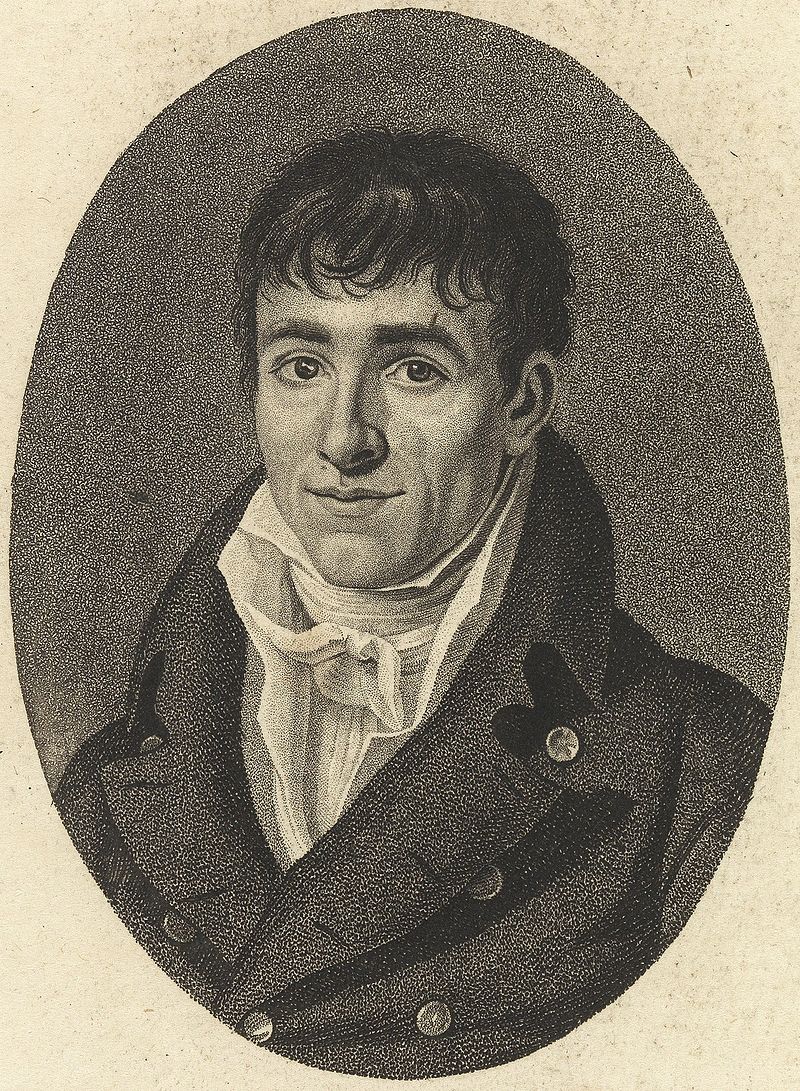
François Péron- frontispiece from German translation.
Péron died of tuberculosis in his hometown of Cérilly in 1810. He was just thirty-five years old. Peron died before completing his records on the expedition and it was finished by his ship-board colleague Louis Freycinet, who later commanded the Astrolabe on a second scientific expedition in the region. Peron did however describe his frog in 1807: Hyla nebulosa which was later described by Ambystoma Tschudi in 1838.
In Australia the Francois Peron National Park national park on the Peron Peninsula in Western Australia, 726 km north of Perth, and located within the boundary of the Shark Bay World Heritage area, bears testament to his work. It was gazetted on 8 January 1993 as a National Park – through the purchase of Peron Station (Pastoral Lease 3114/761) in 1990.
The Baudin expedition of 1800 to 1803 was a French expedition to map the coast of New Holland (now Australia). Nicolas Baudin was selected as leader in October 1800. The expedition started with two ships, Géographe, captained by Baudin, and Naturaliste captained by Jacques Hamelin, and was accompanied by nine zoologists and botanists, including Jean-Baptiste Leschenault de la Tour, François Péron and Charles-Alexandre Lesueur as well as the geographer Pierre Faure.
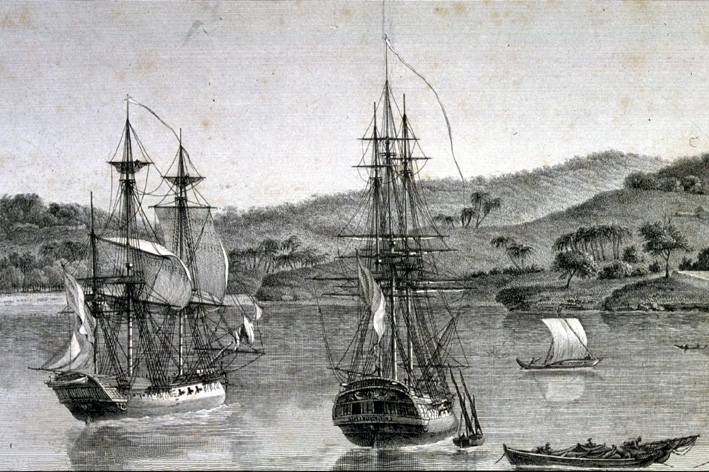
Géographe and Naturaliste
Napoléon Bonaparte, as First Consul, formally approved the expedition "to the coasts of New Holland", after receiving a delegation consisting of Baudin and eminent members of the Institut National des Sciences et Arts on 25 March 1800. The explicit purpose of the voyage was to be "observation and research relating to Geography and Natural History."
Because of delays in receiving his instructions and problems encountered in Isle de France (now Mauritius) they did not reach Cape Leeuwin on the south-west corner of the continent until May 1801. Upon rounding Cape Naturaliste, they entered Geographe Bay. During their exploration here they lost a longboat and a sailor, Assistant Helmsman Timothée Vasse. They then sailed north, but the ships became separated and did not meet again until they reached Timor. On their journeys the Géographe and the Naturaliste surveyed large stretches of the north-western coast. The expedition was severely affected by dysentery and fever, but sailed from Timor on 13 November 1801, back down the north-west and west coast, then across the Great Australian Bight, reaching Tasmania on 13 January 1802. They charted the whole length of Tasmania's east coast and there were extensive interactions with the Indigenous Tasmanians, with whom they had peaceful relationships. They notably produced precious ethnological studies of Indigenous Tasmanians.
The expedition then began surveying the south coast of Australia, but then Captain Jacques Felix Emmanuel Hamelin in Naturaliste decided to make for Port Jackson (Sydney) as he was running short of food and water, and in need of anchors. En route, in April 1802, Hamelin explored the area of Western Port, Victoria, and gave names to places, a number of which have survived, for example, Ile des Français is now called French Island.
Meanwhile, Baudin in the Géographe continued westward, and in April 1802 encountered the British ship Investigator commanded by Matthew Flinders, also engaged in charting the coastline, at Encounter Bay in what is now South Australia. Flinders informed Baudin of his discovery of Kangaroo Island, St. Vincent's and Spencer's Gulfs.
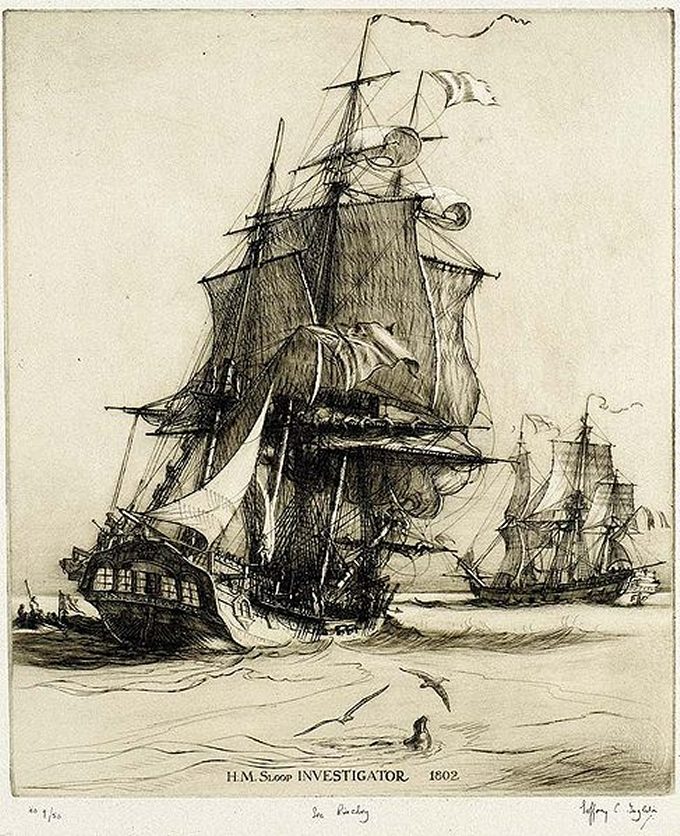
HMS Investigator

'Frenchman's Rock': Memorial rock marking the place where Baudin came ashore at Penneshaw on Kangaroo Island in 1803. Image courtesy State Library of South Australia.
Baudin sailed on to the Nuyts Archipelago, the point reached by the Dutch ship 't Gulden Zeepaert in 1627, before heading for Port Jackson as well for supplies. In late 1802 the expedition was at Port Jackson, where the government sold 60 casks of flour and 25 casks of salt meat to Baudin to resupply his two vessels. The supplies permitted Naturaliste to return to France and Géographe to continue her explorations of the Australian coast. Naturaliste took with her the Colony's staff surgeon, Mr. James Thomson, whom Governor Philip Gidley King had given permission to return to England.
Before resuming the voyage Baudin purchased a 30 ton schooner, which he named the Casuarina, a smaller vessel which could conduct close inshore survey work. He sent the larger Naturaliste under Hamelin back to France with all the specimens that had been collected by Baudin and his crew. As the voyage had progressed Louis de Freycinet, now a Lieutenant, had shown his talents as an officer and a hydrographer and so was given command of the Casuarina. The expedition then headed for Tasmania and conducted further charting of Bass Strait before sailing west, following the west coast northward, and after another visit to Timor, undertook further exploration along the north coast of Australia. Plagued by contrary winds, ill health, and because 'the quadrupeds and emus were very sick', it was decided on 7 July 1803 to return to France. On the return voyage, the ships stopped in Mauritius, where Baudin died of tuberculosis on 16 September 1803. The expedition finally reached France on 24 March 1804.
Other Pittwater Frogs
Pittwater environs have a number of different frogs; the Common Eastern Froglet, Eastern Banjo Frog, and the the threatened Green and Golden Bell Frog and Red-crowned Toadlet.
During Bushcare works done in 2013 an endangered Giant Burrowing Frog was found at Mullet Creek. The Giant Burrowing Frog (Heleioporus australiacus) is listed as Vulnerable under the NSW Threatened Species Conservation Act 1995 and federally under the Environmental Protection and Biodiversity Conservation Act 1999.
It is one of our largest frogs and a burrower. The Great Burrowing Frog usually spawns in a small water-filled burrow or under thick vegetation in dams, ditches, and slow flowing streams. The tadpoles hatch and escape when the water rises to flood the burrow.
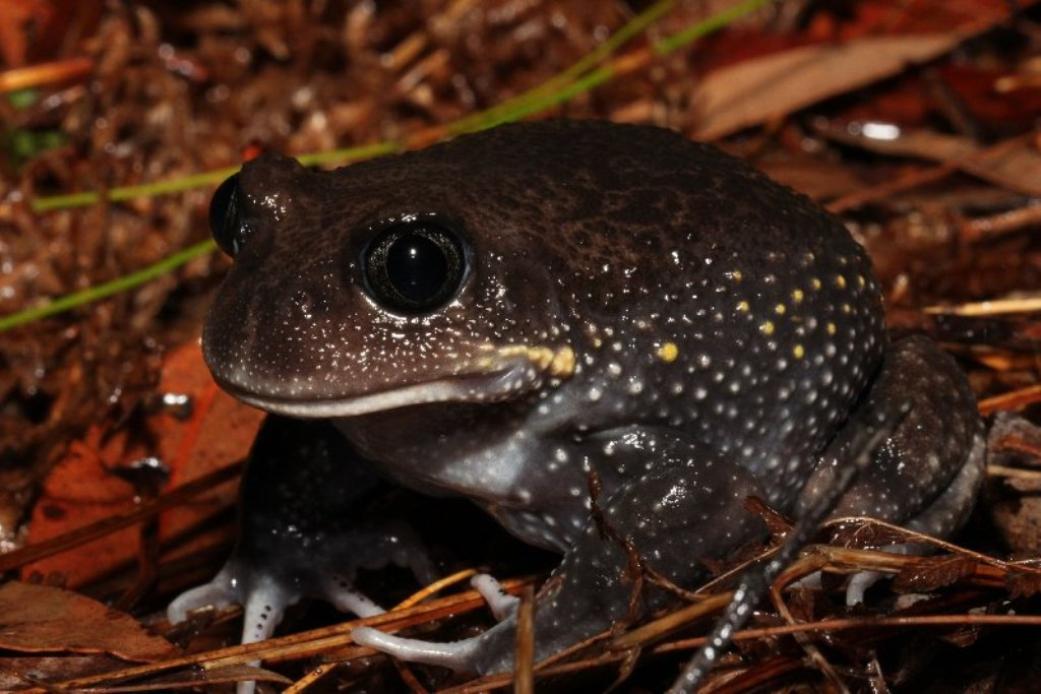
Photo of Giant Burrowing Frog taken by Chris Jolly, 2013